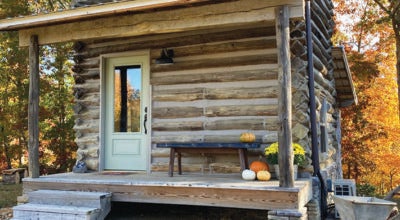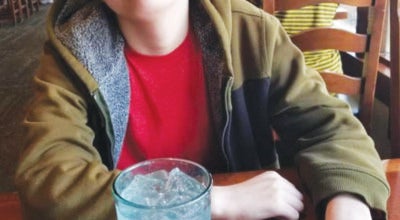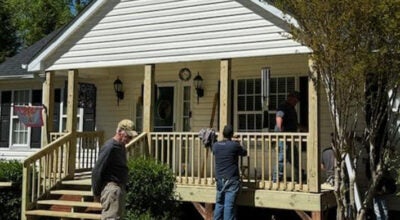Presidential Sites: The White House went through many changes early on
Published 9:22 am Thursday, November 18, 2021
|
Getting your Trinity Audio player ready...
|
By Betty Etchison West
For the Enterprise
The one place that is connected to all of the Presidents of the United States except George Washington is the White House in Washington, D.C.
The place which is now the capital of the United States was farm and forest land when it was chosen to be the seat of the government of the new nation, the United States of America.
Philadelphia first served as the capital which was then moved to New York.
Finally the place to be called Washington was chosen to be the capital. Plans for the new capital city were drawn up by a Frenchman, Charles L. ‘Enfant. His plan included the layout for a city with streets, parks, etc. He also drew the plan for the President’s House. After the excavation of the basement had begun, Mr. ‘Enfant lost the favor of the leaders, and he found himself out of the whole project. For about a year nothing happened. Then, James Hoban was chosen to carry on the project.
According to the book, “The President’s House” by William Seale, a 1,200 page, two-volume tome, which was authorized by the White House Historical Association with the cooperation of the National Geographic Society: “Hoban’s drawings showed a house of stone, a three-story rectangular building with a slightly projecting frontispiece of engaged columns riding a heavy base, probably rusticated.” This was the plan accepted, but it was enlarged. Not only was Hoban’s plan accepted, he was also chosen to oversee the work. The first stone of the President’s House was laid on Oct. 13, 1792.
Once the plan was approved, workers had to be found to do the work. People with special skills such as stonecutters, brick masons, and skilled carpenters were needed and were in short supply. Workers were recruited in Europe with some success, but, as the work continued, there was sometimes difficulties between these workers and the local unskilled laborers, some of whom were slaves who were hired from their masters. Many of the workers lived in hastily constructed huts near the construction site.
Materials were also difficult to find. Stone had be cut out of quarry. Brick had to be made by hand and even finished lumber was scrace. Finally enough materials and workmen were assembled to finish the basement by September of 1793 – about a year after the corner stone was laid. The work continued with starts and stops until 1800 when the house was more or less completed.
Although George Washington never lived in the President’s House, his interest in it continued until he left office. The second President, John Adams, began his journey from his home in Massachusetts to Washington on Oct. 5, 1800. He arrived at President’s House on Nov. 1, 1800. The next day he took a pen and wrote his benediction for the house. “I pray Heaven to bestow the best of blessings on this House and on all that shall hereafter inhabit it. May none but honest and wise men ever rule under this roof!” That blessings was carved into the mantel of the state dining room in 1945.
When Abigail Adams joined her husband, there were only five months left in his administration. Even though the President’s House was said to be completed when the Adams moved there, it really was barely fit for occupancy. The plaster on the walls was still wet which resulted in the rooms being cold and damp. Mrs. Adams said that the condition of the house was acceptable as long as big fires were burning in all of the fireplaces. Even though the condition of the President’s House was not very good, Abigail Adams seemed to accept things as they were without complaint. John Adams was not re-elected for a second term.
When the third president, Thomas Jefferson, moved into the President’s House, life there became a bit less formal. President Jefferson wanted to be sure that the country, as shown by behavior in the White House, was a republic, not a dynasty. A republic as defined by Webster’s is “a government having a chief of state who is not a monarch and who in modern times is usually a president….a government in which the supreme power resides in a body of citizens entitled to vote”
Mr. Jefferson’s less formal behavior sometimes created problems. For example, he was wearing old clothes and his bedroom slippers when he received a new ambassador who had come to present his credentials. The country from which that ambassador had come considered Mr. Jefferson’s lack of more formal attire an affront.
Mr. Jefferson began changing things soon after he moved into the President’s House. He began by selling President Adams’ coaches, horses and fancy harnesses. He kept only a one-horse market cart. He had a wooden privy destroyed and two water closets were built upstairs because he thought having a privy in public view was ludicrous.
The President changed the use of the various rooms. He had the stairs that had just been built torn down and the entrance was changed. There were so many changes that Mr. Hoban was called back in to supervise the work. Mr. Seale said in his book that Mr. Jefferson was not just simplifying but actually enriching the interior of the house.
Mr. Jefferson’s wife died before he became president which meant that there was no First Lady. When he realized that there were times when a lady was required to carry out certain social obligations, he asked the wife of his Secretary of State, Dolley Madison, to fill the role of hostess. Dolley was delighted to help. When the President’s daughter lived with her father, she acted as hostess.
After James Madison was elected President, he and his wife, Dolley, moved into the President’s House, where she was really in her element. There were repairs made to the house and the use of various rooms was changed, but basically Dolley was just happy to be there. She was an absolutely wonderful hostess who realized that she could help her husband by bringing people together in a non-threatening environment.
All was well until 1812 when the British decided that they were not going to let the colonies go even though they had won the Revolutionary War. Once again, British ships docked and British soldiers march toward the nation’s capital. The soldiers marched to the President’s House only to find Dolley, who they hoped to capture, gone. They sat down and ate the meal that she had prepared for guests. They then went outside, lit fire to rags which had been attached to poles, broke windows, and threw the flaming poles inside. Soon the beautiful President’s House was engulfed with flames which continued to burn until they were extinguished by rain which fell during a big thunderstorm. Only the blackened outer walls were left standing. President Madison and his wife were never able to return the President’s House to live.
There was much discussion about whether to rebuild the President’s House or to destroy what was left and start over. Finally they decided to rebuild.
Once again there were many construction problems, but, in 1817, the next president James Monroe was able to move into the rebuilt but unfinished President’s House.






